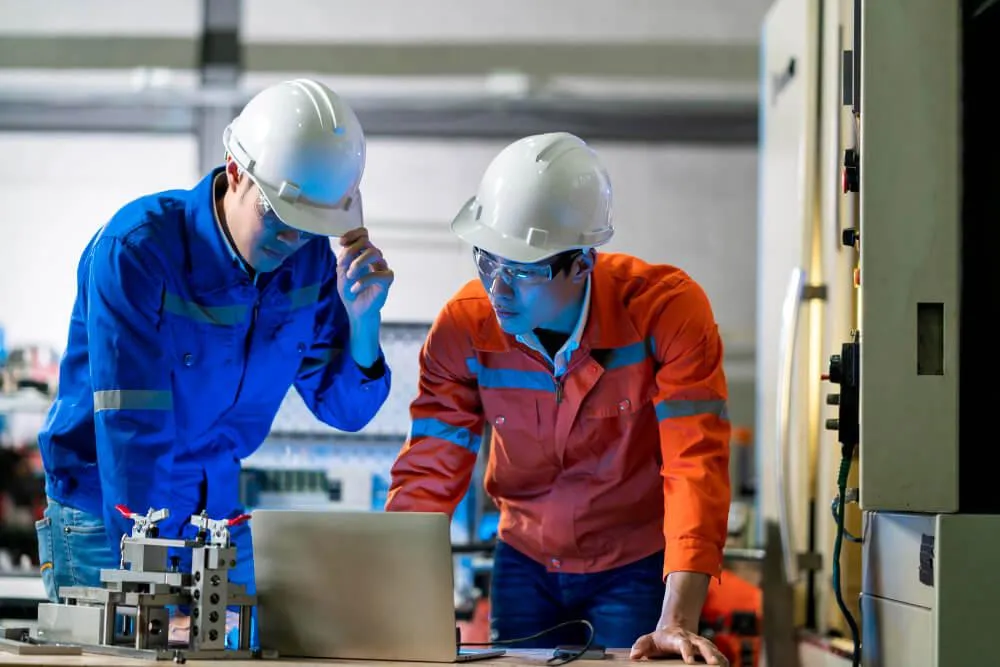Blog

What Is CNC Machining? An Overview of the CNC Machining Process
CNC machining is a game-changer in the manufacturing world. It transforms how we create everything from simple tools to complex parts. But what does a CNC machine stand for? CNC machine stands for Computer Numerical Control, this process uses computer programming to control machinery and tools precisely. It ensures unparalleled accuracy and efficiency. In this blog post, we will discuss CNC machining and discover how it's reshaping the future of production·
What is CNC Machining Technology?
CNC machining technology stands as a cornerstone in modern manufacturing, offering a high-tech approach to shaping materials with incredible precision. At its core, it involves the use of computers to control machine tools, such as mills, lathes, and grinders.
This ensures each cut is exact and consistent. This digital manufacturing technique allows for complex shapes and designs to be produced with minimal human intervention. It therefore streamlines the production process and enhances efficiency·
Types of CNC Machines

Let’s delve into some of the most common types of CNC machines and what makes them stand out·
Milling Machines
Within the machining industry, CNC milling machines are the workhorses. By moving in a direction that is at an angle to the tool's axis, they can remove material from a workpiece with rotary cutters. Because of their adaptability, they can accurately create slots and pockets, drill, and cut gears, among other duties. Their adaptability makes them indispensable in creating complex shapes and features·
Lathes
Lathes take CNC machining for a spin, quite literally. To produce symmetric objects around an axis of rotation, these machines rotate the workpiece on its axis while applying tools to it for various operations such as drilling, sanding, knurling, and cutting. CNC lathes bring high accuracy and speed to the table, making them perfect for producing more precise parts·
Routers
CNC routers are the artists of the CNC machine family, primarily used in woodworking and metalworking for cutting, carving, and shaping materials. They resemble milling machines but are designed to handle softer materials, including plastic and foam. Their ability to create intricate designs and patterns with fine detail makes them a favorite for sign-making, furniture building, and prototype development·
Grinders
Grinders are the machines that bring the finishing touch.CNC grinders use a rotating wheel to improve the surface finish, grind cutting tools, and shape metal pieces with high precision. They ensure the final product meets exact specifications and quality standards. From sharpening tools to crafting parts with tight tolerances, grinders are essential for achieving a polished finish·
How CNC Machining Works

Let's break down the step-by-step process of how CNC machining works, making it easier to understand this innovative technology·
Design the CAD Model
The journey begins with a detailed design. Using CAD (Computer-Aided Design) software, engineers create a 3D model of the part to be produced. This digital blueprint is the first step, outlining dimensions, properties, and the overall geometry of the final product·
Convert CAD to CNC Program
When the CAD model is ready, it is translated into G-code, which is used by CNC machines. This code gives the CNC machine the instructions it needs to make the part. It includes directions for every movement, speed, and path the machine tool will follow·
Set Up the CNC Machine
Before the magic happens, the machine needs to be prepared. This involves setting up the workpiece—the material block to be shaped—and installing the necessary cutting tools in the machine. Operators ensure everything is securely in place to maintain precision during machining·
Execute the Machining Operation
With the press of a button, the CNC machine springs to life. Following the instructions laid out in the G-code, the machine starts cutting the workpiece. The cutting tools move along multiple axes to carve, drill, or lathe the material into the final design, executing complex cuts with exact accuracy·
Inspection and Finishing Touches
The last step involves a thorough inspection of the machined part to ensure it matches the original CAD design's specifications. Any necessary finishing touches, such as polishing or additional detailing, are applied to complete the process·
Materials Compatible with CNC Machining
CNC machining excels in working with a broad spectrum of materials, from durable metals like aluminum and steel. It also works in versatile plastics such as ABS and polycarbonate, composites, and more.
This diversity enables the production of precise, high-quality parts for various applications. It showcases CNC's adaptability and precision across industries·
Conclusion
In conclusion, CNC machining stands as a cornerstone of modern manufacturing. It blends computer precision with mechanical efficiency to produce parts of unparalleled accuracy and complexity.
It's a technology that not only revolutionizes how we create but also expands the possibilities of what can be made, catering to a vast array of materials and industries. With CNC machining, the future of manufacturing is here, offering endless opportunities for innovation and design.
